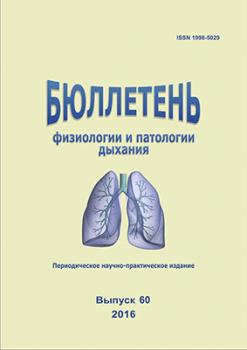Blagoveschensk, Blagoveshchensk, Russian Federation
Blagoveschensk, Blagoveshchensk, Russian Federation
Blagoveschensk, Blagoveshchensk, Russian Federation
The functional state of liver in 112 term newborns, who depending on their antenatal ontogenesis were divided into 4 groups, was studied. The first group (control) was made of 30 healthy newborns from mothers with physiological course of pregnancy; the second group consisted of 30 children whose mothers suffered influenza A(H3N2) (antibody titers were 1:4-1:16), the third group had 27 newborns with antenatal anamnesis complicated with influenza A(H3N2) (antibody titers were 1:8-1:32) and the fourth group had 25 children whose mothers suffered A(H3N2) (antibody titers were 1:32-1:128) at early stages of gestation. In newborns in the serum of the umbilical blood there were found the contents of total protein, albumins, total, indirect and direct bilirubin, activity of alanine aminotransferase, serum glutamate-oxaloacetate-transaminase, gamma-glutamyl transpeptidase, lactic dehydrogenase and alkaline phosphatase, concentration of total cholesterol, lipoproteins of low density and triglycerides. In babies from mothers who suffered influenza infection with antibody titers 1:32-1:128 there was the decrease of total protein till 55.1±1.27 g/l (in the control group it was 62.1±1.45 g/l; р<0.01) and albumins till 34.2±1.01 g/l (in the control it was 38.2±1.13 g/l; р<0.05) against the increase of total bilirubin till 35.5±1.29 mcmole/l (in the control it was 25.3±1.67 g/l; р<0.001), of indirect bilirubin till 33.2±1.28 mcmole/l (in the control it was 23.4±1.67 mcmole/l; р<0.001), of direct bilirubin till 2.33±0.10 mcmole/l (in the control it was 1.91±0.09; р<0.01) and the activity of alkaline phosphatase till 175.7±10.62 МЕ/l (in the control it was 141.6±6.39 МЕ/l; р<0.01). This showed the suppression of protein-synthesizing and pigment function of the liver as well as of the process of cholestasis. At the same time there was the decrease of total cholesterol till 1.83±0.06 mmole/l (in the control it was 2.08±0.07 mmole/l; р<0.01) and lipoproteins of high density till 1.02±0.06 mmole/l (in the control it was 1.27±0.06 mmole/l; р<0.01). Their concentration causes the stability of cellular membranes and hypothalamic-pituitarium-adrenal system in newborns to unfavourable factors in the early postnatal period of their development.
hepatobiliary system, full term newborn, influenza A(H3N2), the first trimester of pregnancy.
1. Aylamazyan E.K., Konstantinova N.N., Polyanin A.A., Kogan I.Yu. Modern understanding of the venous circulation in the fetoplacental system. Zhurnal akusherstva i zhenskih bolezney 1999; 48(3): 10−14 (in Russian).
2. Volodin N.N., Degtyareva A.V., Degtyarev D.N. The main causes of jaundice in newborn infants and the principles of differential diagnosis. Rossiyskiy vestnik perinatologii i pediatrii 2004; 49(5):18−23 (in Russian).
3. Grigorenko A.A., Zabolotskikh T.V., Gorikov I.N., Grigorenko G.V. The state of hepatobiliary system in newborns with intrauterine parainfluenza of 1 and 3 types. Bûlleten´ fiziologii i patologii dyhaniâ 2013; 53: 99−102 (in Russian).
4. Kamyshnikov V.S. Handbook of clinical and biochemical laboratory diagnostics. Vol.2. Minsk: Belarus´; 2002 (in Russian).
5. Volodin N.N., editor. Neonatology: national manual. Moscow: GEOTAR-Меdia; 2007 (in Russian).
6. Popova A.S., Krupitskaya L.I. , Dubrovskaya V.P., Gornostaeva A.B. The state of the function of the liver in the neonate with various syndromes developing in the early postnatal period. Voprosy ginekologii, akusherstva i perinatologii 2009; 8(4):28−30 (in Russian).
7. Sherlock Sh., Dooley J.S. Diseases of liver and biliary system. Moscow: GEOTAR-Меdia; 1999 (in Russian).





